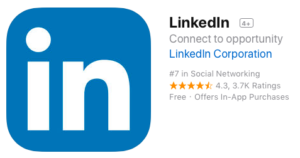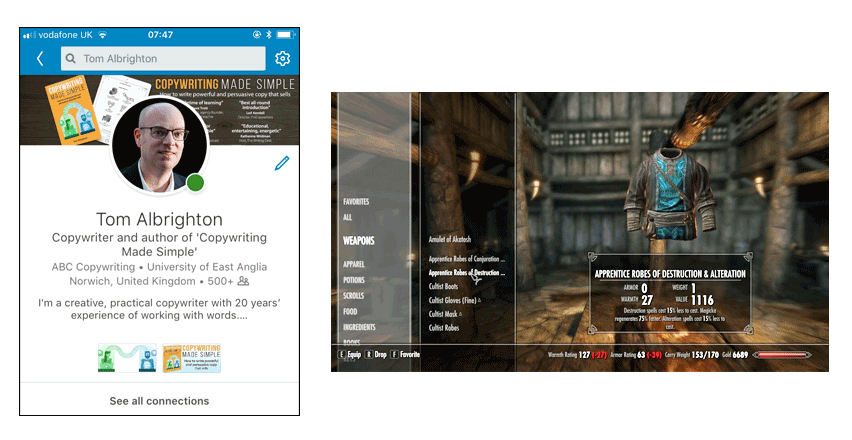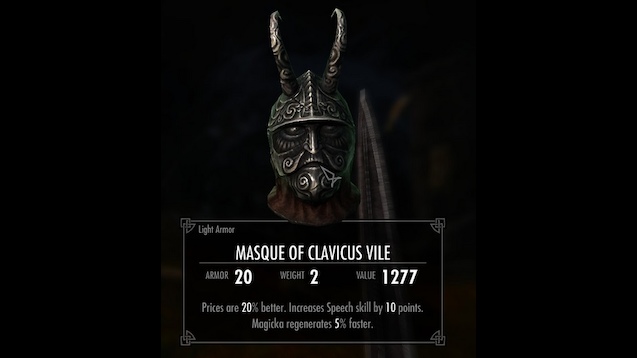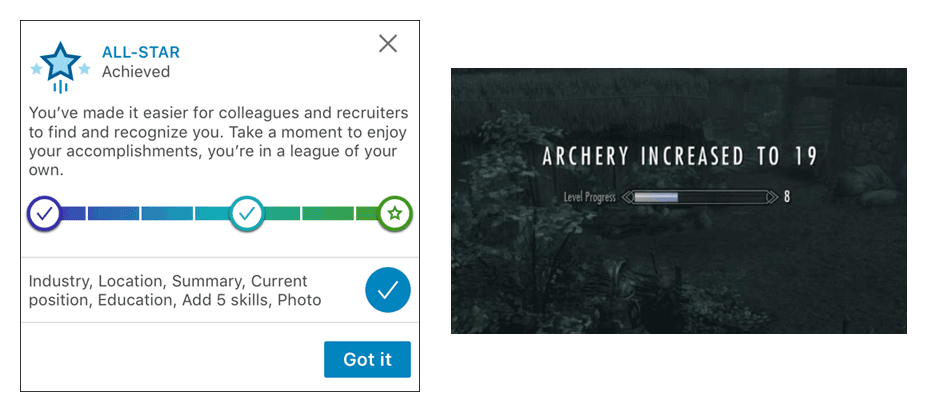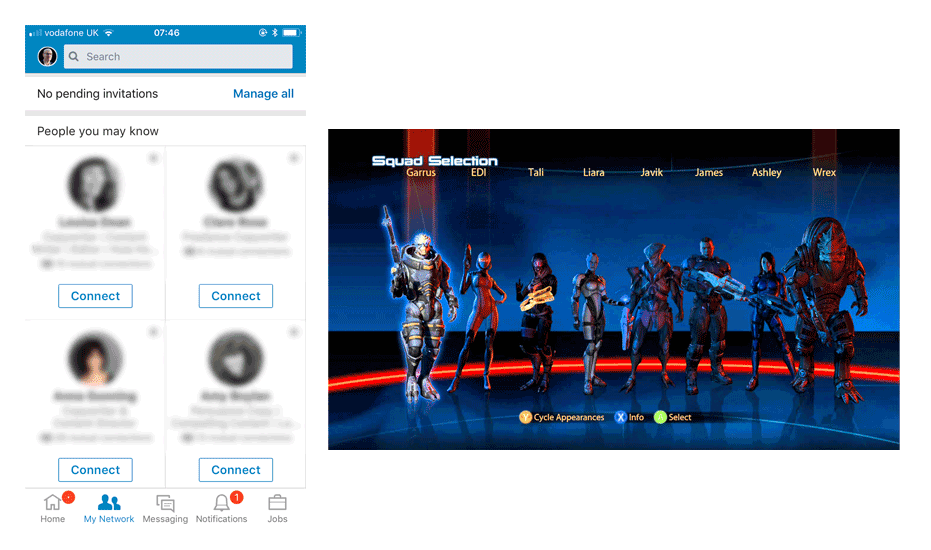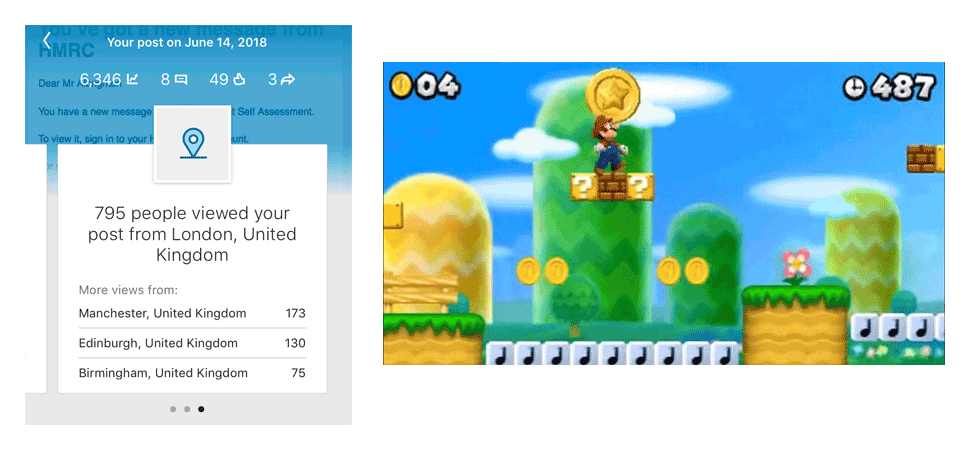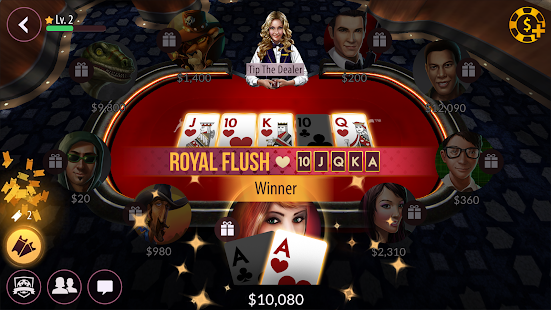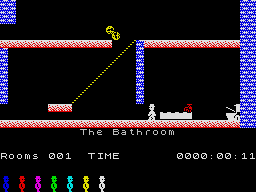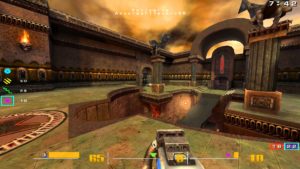LinkedIn is just videogaming in a suit
So I finally gave in. I downloaded the LinkedIn app. So I could connect to opportunity.
And I have to say, connecting to opportunity totally rocks.
Basically, the app gamifies your professional life. With its pick-up-and-play accessibility, it finally makes it fun to cultivate your personal brand. I mean, networking on the toilet – what’s not to like? And like all the best gaming experiences, LinkedIn is totally immersive and utterly addictive.
Character building
My quest begins on the profile page. Here I prepare my character for its forays into the LinkedIn gameworld, just as one might equip one’s apparel in Skyrim.
I don’t like to boast, but I do have a video on there. Which, in terms of buffing my speechcraft and bartering, is a bit like obtaining the Masque of Clavicus Vile.
And once I’ve done all that, I’m rewarded with a darling little blue star. Achievement unlocked!
Look, I’m in a league of my own! (With 300,000 others.)
Squad selection
Now it’s time to put a crew together, so I head over to Network. Here, I recruit the hottest most professionally relevant non-player characters to my party. Presumably their stats will somehow complement or reinforce my own, like in Final Fantasy or Mass Effect, improving my odds of victory.
But even as I fire off my invitations to connect, more and more contacts pop into view, like Tetris tiles. Is there no end to this game?
From time to time I come across an end-of-level boss: a super-powerful contact with a stellar cv and awe-inspiring social stats. Are my skills and experience strong enough to take them down? Or will my puny invitation to connect bounce off harmlessly, like a basic bullet off a colossal airborne brain with claws?
Going for gold
Checking game progress is always satisfying, so I call up my notifications. The views of my posts are mounting up in dizzying numbers, like glittering virtual currency. I guess they must have some sort of value. Maybe I can buy a really powerful weapon later on?
Of course, I can never be sure which of my articles – if any – will pay off. Those tantalising uncertain rewards are what keep me coming back for more. I gamble my content in the hope of winning likes, longing to see that little red circle with a number that means somebody, somewhere, somehow likes me. As in poker, success in social media is down to an alchemical blend of luck, ability and confidence.
In my day
It wasn’t always this way. Networking, like playing games, used to be a whole lot harder.
If you were a teenager in the 1980s, the only way to reach your friends was to phone their parents’ house. As an impoverished student, you probably walked to the nearest payphone, where you spent your last 10p to learn that your mate had just gone out. Traipsing home at 9pm, having completely failed to meet up at all, wasn’t out of the question.
Get an office job and you probably wouldn’t have a computer; they’d be reserved for people who needed them. You’d work with paper, or a manual typewriter. When you wanted to contact someone, you’d phone them, fax them or send a letter. An you might well wait days for a reply.
Your ‘contacts’ or ‘network’ – although you never called them that – probably existed only as a bunch of scribbles in an address book. Maybe you’d ‘add a new contact’ at a conference, or in the pub. But mostly, your professional circle would be people you’d actually worked with, face to face. Working freelance would have taken a lot more phone calls, referrals and site visits than it does now.
As for games, they were insanely, brain-breakingly difficult. Playing Robotron took superhuman hand-eye-other-hand co-ordination, while Defender demanded the reaction times of a bluebottle on speed. In an infernal twist, some ZX Spectrum games, like Jet Set Willy, were not only forbiddingly solid, but so shonkily programmed that you couldn’t complete them at all.
Networking with quad damage
Do I want to go back to those days? Hell no. That’s like asking if I want to physically lift the eight guns and 40 rail slugs that I can seemingly carry while leaping around Q3DM7 like a wallaby.
Basically, why would you want to do anything for real when you could do it in a game?
LinkedIn makes white-collar interactions frictionless, costless and painless – like real-life networking, but without the awkward self-introductions and tepid white wine.
And your contacts, instead of being flesh-and-blood humans who answer back, become virtual resources to be collected, categorised and deployed. They are the stepping-stones that connect you to opportunity.
We’ll always want things to be easier and quicker, and we’ll never willingly give up our luxuries – which is why the LinkedIn app is catnip in pinstripe. And now, if you’ll excuse me, I have invitations waiting…
Tags: app, Defender, gaming, Gradius, Jet Set Willy, LinkedIn, Mario World, Mass Effect, Quake III Arena, Robotron, Salamander, Skyrim, stats, Tetris, videogames, ZX Spectrum, Zynga Poker
